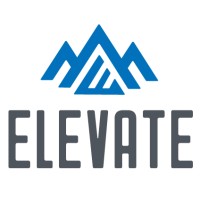By Jim Shellenberger, CFA, CFP®
Retirement may feel distant and abstract, like a far-off destination on your life’s road map. You imagine it, save for it, and often dream about it, yet you may overlook the specific phases that make up the entire journey. Just as you progress from an amateur to a seasoned professional in your career, retirement also unfolds in stages, each with its own challenges, joys, and pivotal choices.
Think of it as a book with successive chapters, gradually revealing the plot and storyline. From the pre-retirement years in your 50s to the decades beyond, each stage comes with its own set of questions and experiences. Let’s explore what you need to know for every phase of your retirement journey.
Chapter 1: Your 50s
At this stage of life, retirement becomes less like a far-off dream and more like a forthcoming reality. You begin to seriously think about when you can retire and how to take the right steps to retire comfortably.
During your 50s, you will likely launch your kids into adulthood and experience your highest earning years, which gives you more to work with. But that extra money you aren’t used to having can result in “lifestyle creep,” where your expenses grow along with your pay raises. (1) These increased expenses may not always be nonessential either, as you might become responsible for increased housing costs, education expenses, healthcare costs, and even eldercare costs.
Despite these financial strains, the inflow of new money into retirement accounts must not cease; your retirement plan assets should not be drawn down through loans or withdrawn too early. Rather, these should be the years where you maximize your retirement plan contributions. If you are over 50, you can make catch-up contributions to beef up your nest egg.
Chapter 2: Your Early 60s
You are so close, you can almost taste it. Now you are starting to think about the many details that make up the process of retiring and the financial and lifestyle decisions involved.
If you find yourself in this phase, it’s time to get realistic about the near future. Do you know what you will do next? How will you make it a reality? For example, will you be able to keep up with your current expenses while on a fixed income? Be sure to test out different budgets to make sure your finances are set. Do you want to volunteer or start an encore career? Start mapping out the details now. If you do not have a set plan for the next chapter of life, a phased retirement may give you more of an opportunity to figure it out.
Usually, this is the time to dial down risk in your portfolio. Market downturns have a greater impact on your long-term success as you don’t have the same time to recover. This is what is called sequence of negative return risk. You should speak with an advisor to make sure you have the correct mix of investments that will provide cash flow in the short term and growth in the long term. You also can’t afford to be too conservative as lower growth will be eroded by the rising cost of living.
Chapter 3: Retired Life Begins
The first year or so of retirement is akin to a “honeymoon phase.” You have the time and perhaps the money to pursue all kinds of dreams, so the key is not to spend wildly. Lifestyle creep also affects new retirees, and free time often means more chances to spend money.
When it comes to your investments, your portfolio looks very different than it did when you were in your 20s and 30s. Bond funds and fixed income may make up a larger portion of your investments. Your focus is on generating cash flow to live on and preserving what you’ve worked so hard to save. However, you should still have exposure to the stock market. If you retire at age 65, there is a good chance you have a 30-plus-year retirement ahead of you. As such, you should keep exposure to stock funds for their growth potential.
Up until now, you’ve probably received healthcare coverage from your employer. When you retire, it’s a new ball game. Medicare eligibility begins at age 65. You have plenty of choices for your Medicare plan, such as original Medicare coverage, prescription drug plans, and supplemental insurance. Your premium costs will depend on your coverage choice and your income. Medicare can be complicated and overwhelming, so if you are in this chapter, start researching now (2) to make informed choices.
Chapter 4: Mid 60s Through Late 70s
This is the chapter where restlessness can begin to set in. If you didn’t make concrete lifestyle plans before retiring, you might get bored with your all-leisure, all-the-time lifestyle and decide to volunteer or work on your own terms, health permitting.
It’s also the time when people begin to worry about how their retirement savings is growing smaller. You may want to adjust your retirement income strategy or see if new streams of income can be arranged.
Chapter 5: 80s and Beyond
The last chapter of retirement is one frequently characterized by the sharing of legacies and life lessons, a new perspective on the process of living and aging, and deeper engagement (or reengagement) with children and grandchildren. This is also the time when you should think about your financial legacy and review or update your estate plan so that when you leave this world, things are in good order and your wishes are followed.
Which Phase Are You In?
No matter where you are in life, having a seasoned financial advisor by your side can make a world of difference. At Elevate Wealth Management, we’re committed to offering objective guidance on income, investments, wealth transfer, and management at every stage of your retirement journey. Let us help you assess your choices and craft a financial road map that fits your specific needs and goals. Reach out to schedule a complimentary introductory meeting by emailing me at jshellenberger@frontierasset.com or 307.673.5675.
About Jim
Jim Shellenberger, CFA, CFP® is a financial advisor at Elevate Wealth Management, an independent, fee-only wealth management firm serving young professionals, pre-retirees, and retirees in Sheridan, Wyoming, and surrounding areas. With the mission of serving and educating, Jim is dedicated to providing comprehensive, top-notch services that not only help his clients reach their goals, but also empower them to make the best financial decisions for their lives and walk toward their future with confidence. Jim is known for going the extra mile, not only offering valuable knowledge in investment management as a former investment analyst, but building long-lasting relationships so he can give honest, customized advice and strategies that make an impact on their lives.
Jim has a bachelor’s degree in business administration with a minor in finance from the University of Wyoming. He is proud to be a Wyoming native and loves exploring the outdoors with his family—hiking, fishing, hunting, and backpacking. Faith is an integral part of Jim’s life, and he always looks forward to attending church on Sundays, Bible study on Fridays, and being part of his church community. He’s also an avid sports fan! Fun fact: Jim owns shares in the Green Bay Packers. To learn more about Jim, connect with him on LinkedIn.
The views expressed represent the opinion of Frontier Asset Management. The views are subject to change and are not intended as a forecast or guarantee of future results. This material is for informational purposes only. It does not constitute investment advice and is not intended as an endorsement of any specific investment. Stated information is derived from proprietary and nonproprietary sources that have not been independently verified for accuracy or completeness. While Frontier Asset Management believes the information to be accurate and reliable, we do not claim or have responsibility for its completeness, accuracy, or reliability. The use of such sources does not constitute an endorsement. Frontier does not have an affiliation with any author, company or security noted within. Statements of future expectations, estimates, projections, and other forward-looking statements are based on available information and the Frontier Asset Management’s view as of the time of these statements. Accordingly, such statements are inherently speculative as they are based on assumptions that may involve known and unknown risks and uncertainties. Actual results, performance or events may differ materially from those expressed or implied in such statements. Investing in securities involves risks, including the potential loss of principal. Past performance is not indicative of future results.
Frontier does not provide tax advice. Please consult with a CPA for recommendations pertaining to individual circumstances.
Elevate is the financial planning division of Frontier Asset Management. Frontier Asset Management is a Registered Investment Adviser. The firm’s ADV Brochure and Form CRS are available at no charge by request at info@frontierasset.com or 307.673.5675 and are available on our website www.frontierasset.com. They include important disclosures and should be read carefully.
20240409.36489
_____________
(1) Investopedia, Lifestyle Creep, “What it Is, How it Works,” November 29, 2020
(2) Medicare.gov, 2024

